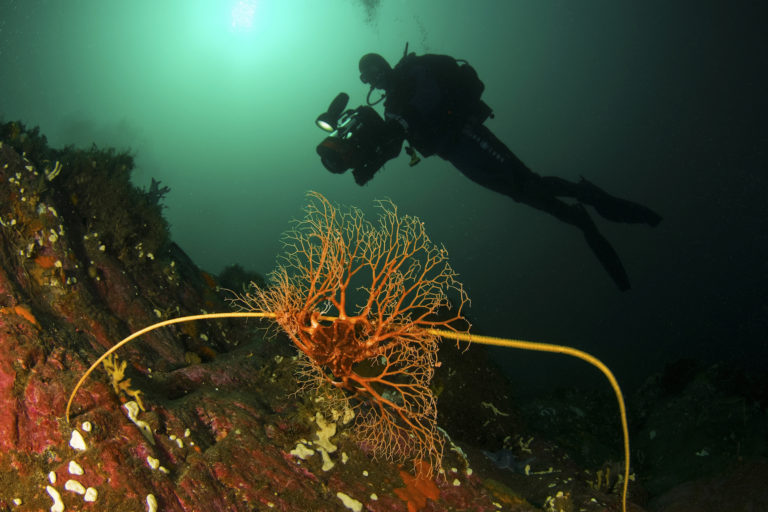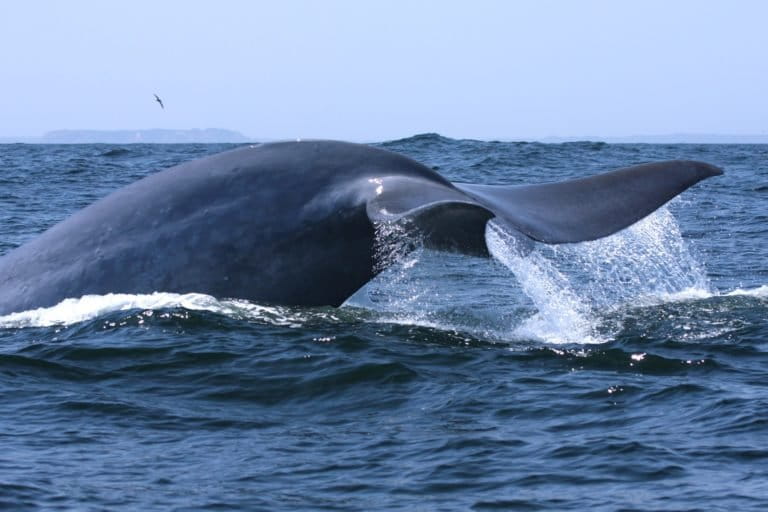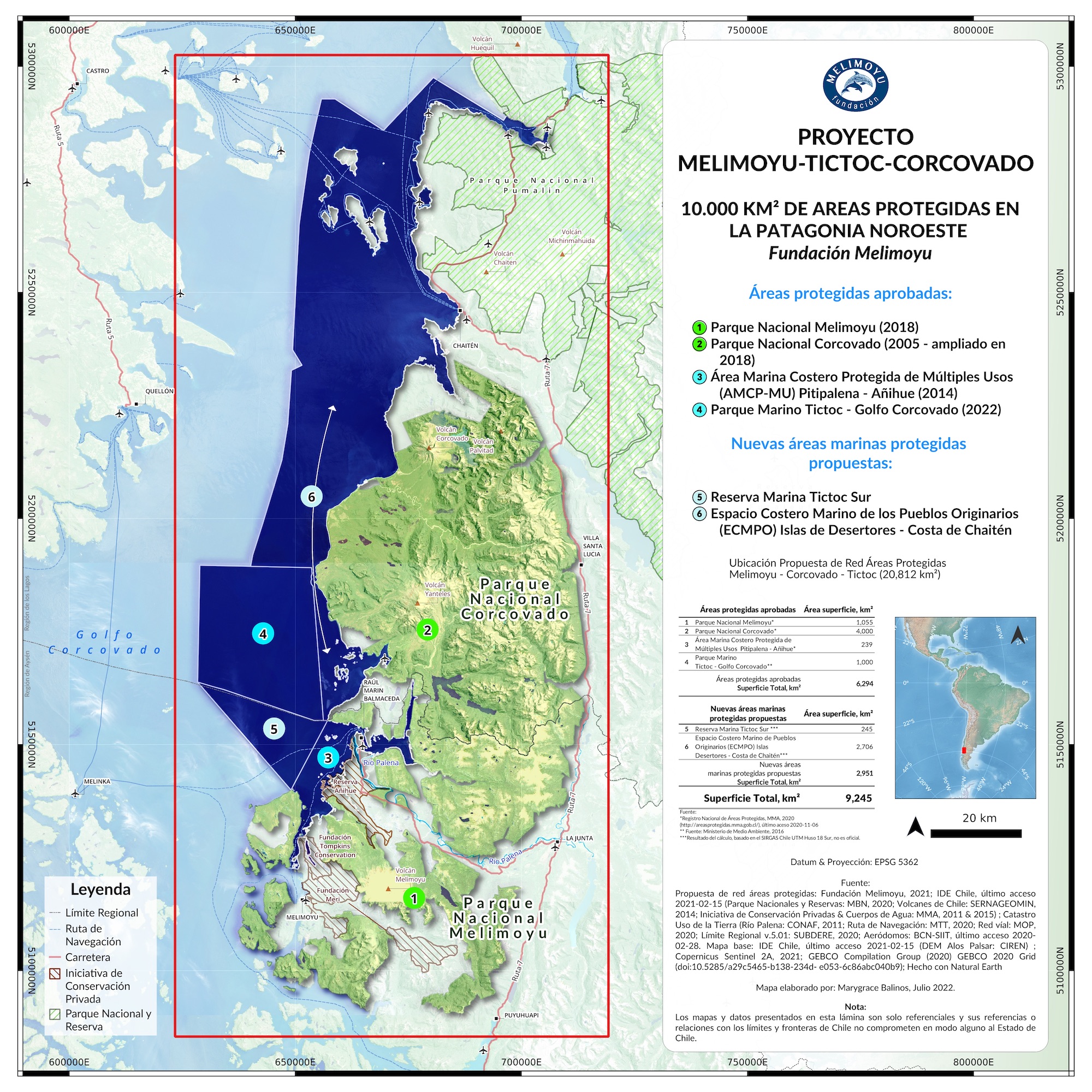- Chile declared some 100,000 hectares (247,100 acres) in the Gulf of Corcovado in Northern Patagonia a marine protected area, the highest category of protection.
- The area is an important feeding and breeding ground for endangered blue whales as well as home to numerous other marine mammal species.
- However, it represents only a small fraction of the blue whales’ range, so scientists say additional conservation efforts must continue.
Chile has a new marine protected area (MPA) in Patagonia that will safeguard an important feeding and breeding area for blue whales (Balaenoptera musculus), a species listed as endangered by the International Union for Conservation of Nature (IUCN).
The country’s Council of Ministers for Sustainability approved the Tic-Toc Golfo Corcovado Marine Park in Northern Patagonia in December 2021. The new MPA finally came to fruition in July 2022, after more than two decades of conservation efforts spearheaded by scientists and conservationists, when the Chilean government issued a decree officially establishing it.
Located south of the island of Chiloé in the Gulf of Corcovado, the MPA spans 100,000 hectares (247,100 acres). The area is frequented not only by blue whales, but also by humpback whales (Megaptera novaeangliae), sei whales (Balaenoptera borealis), at least two species of dolphin, including Peale’s (Lagenorhynchus australis) and Chilean (Cephalorhynchus eutropia), the South American sea lion (Otaria flavescens) and colonies of penguins. It is also visited by the black-browed albatross (Thalassarche melanophris), the southern royal albatross (Diomedea epomophora) and the sooty shearwater (Ardenna grisea) — all birds that feature in the IUCN Red List of Threatened Species.
Whales under siege
A few years ago, scientists confirmed that Chilean Northern Patagonia is the most important feeding and breeding area for the Eastern South Pacific population of blue whales during the austral summer. This would turn out to be a key discovery in protecting this globally unique blue whale population, which is now composed of just a few hundred individuals. These whales sing or vocalize differently from other blue whale populations living elsewhere in the world, according to Susannah Buchan, an oceanographer affiliated with the University of Concepción in Chile among other institutions who helped discover their distinctive sounds. The blue whales in Chilean waters have their own dialect, making them a truly unique population.
Then, in 2021, researchers from the Chilean nonprofit Blue Whale Center were able to demonstrate, with images, the impact that shipping traffic has on whales in Chilean Northern Patagonia.

Scientists used a satellite tracking system with 14 whales to identify the places they visited most often. In parallel, they constructed a map showing shipping routes based on satellite information.
By superimposing the maps, they found that the areas where whales feed in Northern Patagonia experience intense maritime traffic, which could put their recovery at risk. According to the Scientific Reports study confirming the region as the population’s most important summer habitat, “management actions are urgently needed” in these areas because of the various ways vessels could be affecting the whales, ranging from collisions to noise pollution.
A whale (shown by a blue dot) dodges hundreds of boats in Northern Patagonia, Chile, while trying to feed. Animation courtesy of Luis Bedriñana-Romano, Blue Whale Center — Austral University of Chile.
The Tic-Toc Golfo Corcovado Marine Park is intended as a response to this need, as it protects one of the four areas scientists identified as key feeding grounds for the blue whale and it also sees high shipping traffic.
Carlos Cuevas, president of the Melimoyu Foundation, a Chilean NGO that has backed the Tic-Toc Golfo Corcovado Marine Park project from the beginning, said a management plan is being created for the new MPA. “A collaboration agreement is being drawn up between the Melimoyu Foundation and the undersecretariat of fisheries,” he said, referring to SUBPESCA, the government agency that manages the park. “We are putting together a working group that will develop this project over the course of the year in tandem with SUBPESCA.”
He added that the Melimoyu Foundation will provide financial and technical support, although “it is the state that has the last word,” meaning it will be up to SUBPESCA to manage the creation of, and approve, the management plan.
“It has to be done in permanent consultation with all the communities involved; Indigenous people, fishermen, human settlements, etc. In order for a management plan to work, it must have the support of all stakeholders,” he said.

Among other things, the management plan will outline measures to mitigate threats to protected species, especially blue whales, which was the main reason for creating the marine park.
Rodrigo Hucke-Gaete, the Blue Whale Center’s president, confirmed that studies in the area have shown that shipping traffic is among the main threats, and expressed hope that measures will be put in place to limit traffic. “One approach could be to modify navigation routes,” Hucke-Gaete said. Another could be to prohibit travel at night, or at speeds greater than 10 knots. Banning navigation within the area could also be possible, but with some carve-outs, he said. “We wouldn’t want to prohibit everyone from passing through. If there is an emergency, for example, obviously people will have to enter the zone. But we need to see whether maritime traffic is a big issue, and that is what the data is for. The second priority is to look at how we can implement measures so that the conservation work is effective.”
The continued need for protection
Scientists Mongabay consulted for this story are celebrating the Tic-Toc Golfo Corcovado Marine Park as an important first step. However, they agreed that continued efforts are needed to protect a greater part of the blue whales’ territory. “It’s good news, it’s a good first step, but we have to keep going, we have to do more,” Hucke-Gaete said.
The new MPA “isn’t that big in relative terms when you think of the size of whales,” Cuevas said. “We are talking about 100,000 ha, but whales need a much larger space, [and they] don’t just come there to eat.”
The new marine park covers a zone “where scientific studies have shown that whales tend to congregate, but they are found all over the Corcovado Gulf,” he said.

In fact, the Scientific Reports study, co-authored by Hucke-Gaete and other researchers from the Blue Whale Center, showed that there were at least three other “extremely delicate” areas, Hucke-Gaete said. “Imagine a child running in the Alameda [one of the main streets in Chile’s capital of Santiago] trying to find something to eat, surrounded by passing cars. It’s the same thing,” he said. Although the Tic-Toc Golfo Corcovado Marine Park now protects a significant portion of the blue whale’s habitat, “we have to do more to protect this area, which is so important for them and for many other species,” Hucke-Gaete said.
With this in mind, the Melimoyu Foundation aims to protect an area of 1 million ha (nearly 2.5 million acres) through the creation of six protected marine and land areas. “By 2025 we want to have these six areas approved. We already have four, so we still have two to go,” Cuevas said. Those that have already been approved for the protection of marine ecosystems are the recent Tic-Toc Golfo Corcovado Marine Park and the Pitipalena Añihué Multiple Use Marine Protected Area, created in 2014. On land, there is Melimoyu National Park and Corcovado National Park.

The two remaining areas identified by the foundation are the Desert Islands and Chaitén Coast Indigenous Peoples’ Coastal Marine Spaces, an area covering more than 100,000 ha that is currently being processed, and a marine reserve bordering Tic-Toc Golfo Corcovado Marine Park that “is just starting to be processed,” according to Cuevas. “We were waiting for Tic-Toc to be approved before going ahead,” he said.
The aim is to have all protected areas under effective management by 2030 “with programs that are being implemented,” Cuevas said. However, this will be a great challenge, he said, pointing out that it took 21 years for Tic-Toc Golfo Corcovado Marine Park to become a reality.
In Chile, the creation of protected areas must be unanimously approved by the Council of Ministers for Sustainability, which is composed of 10 ministries. One of them is the Environment Ministry, but there is also the economy ministry, which includes fishing, energy and public works. “It is very difficult to convince 10 ministers that have been tasked with representing the interests of their people,” Cuevas said.
Despite the proven ecological importance of the marine ecoregion of Chiloé-Taitao, which stretches from Puerto Montt to the Taitao Peninsula, only 0.5% of the area is now protected, even after the launch of the Tic-Toc Golfo Corcovado Marine Park there, according to Cuevas. The reason, he said, “is that on the coast there is a lot of activity, and a lot of interests.” Although Chile protects 40% of its waters, that protection is concentrated in large offshore areas. “That’s where 95% of protected areas are. Along the coast, where people live, where there is fishing, salmon farming, tourism, boat traffic, it is very difficult to create protected areas.”
Nevertheless, the launch of Tic-Toc Golfo Corcovado is the culmination of a long-held dream. Scientists hope it will lead the way for the increased protection of this vitally important area.
Banner image: Blue Whale. Image courtesy of Nicolás Muñoz.
This story was first reported by Mongabay’s Latam team and published here on our Latam site on Aug. 10, 2022.

